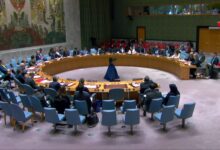New version of car grammar pricing

According to Eqtesadonline, quoting the world of economy, according to the promise of the Competition Council, the new car prices were to be announced in mid-October this year, in a situation where there is no serious will in this regard from the car policy maker or even the Competition Council.
However, credible news from the Ministry of Silence indicates that the six-month car price increase that replaced the quarterly pricing has been completely ruled out this year, and car policymakers have been pushing for six-month pricing in line with rising general inflation and rising inflation. The liquidity crisis in these companies does not decide to increase car prices and considers its social consequences unacceptable. Now the question that arises is what direction can replace the growth of prices in the current situation of the country’s automobile industry? A path that can save the automotive chain from the liquidity crisis in a short period of time and also improve the production situation.
Although the country’s automotive chain, automakers and component makers, do not have comprehensive information on the Ministry of Silence’s plan, Minister Samat’s Sunday meeting with representatives of the Iranian Chamber of Commerce and Wednesday’s meeting of the Coordinating Council of the three powers unveil a kind of automotive policymaking.
At Wednesday’s meeting of the Coordinating Council of the heads of the three powers, part of which examined the problems of the automotive industry in the past, a decision was made on the need to remove obstacles and reform the structure and reduce costs along with increasing domestic production. This was the news that the council’s public relations announced on Wednesday. But on Sunday, the presence of Minister Samat among the members of the Iranian Chamber of Deputies was also significant, and Fatemi Amin’s remarks at this meeting also showed that he was taking another path to compensate the automakers’ liquidity and prevent price increases.
What is clear is that the country’s car industry, due to the lack of productivity and the lack of manufacturing technology on the one hand, and the conditions of sanctions for the past three years, has only been able to provide its desired liquidity by increasing prices. However, mandatory pricing prevents the supply of cars according to production costs, and this has accumulated losses every year and intensified production losses in the country’s car industry. Now, however, the car policymaker has decided to stop the growth of prices from the automaker this time and replace the reduction of the cost price.
The path taken by the car policymaker, of course, according to the calculations of the Ministry of Silence, and its realization is faced with countless questions. Some automotive industry professionals call this the trial and error of the automotive industry, while the current crisis leaves no room for trial and error again.
But the path taken by Fatemi Amin, a minister who said before the vote of confidence in the parliament that he did not seek orderly pricing, and that led to the growth of production and price stability, is the reduction of raw material prices. Last Sunday, Minister Samat stated in the Tehran Chamber of Commerce that “one of the plans that can be pursued in this ministry is to remove the price of the dollar from the country’s economy, and in the case of steel, we were able to remove the dollar from its pricing.”
He went on to say that, for example, in the field of automobiles, 30% of imported parts are, but the price of 40% of other domestically produced car parts is also tied to the dollar. He further said that we have started this process in steel for about two months, that is, the price of ingots, which is now 13,000 Tomans, should have been exchanged for 18,000 Tomans if it was still dependent on the dollar.
Fatemi Amin’s remarks are a continuation of the removal of dollar pricing from the country’s economy, which was proposed by President Mahmoud Ahmadinejad and is now being seriously pursued in the main government. Therefore, it seems that the government not only has no decision to eliminate mandatory pricing, but is also going to price production after the sale. But is the elimination of the dollar in the country’s economy, which Fatemi Amin has raised again, feasible in the country, which is to be used in the automotive industry this time? In this regard, some economists and economists believe that Minister Samat’s remarks about the removal of the dollar from the economy are more of a slogan and, given the current situation, can not have a real and practical aspect.
According to experts, this plan, which is mostly about circumventing sanctions, has been unsuccessful several times in the country so far, and the result of these measures is clear. However, Minister Samat considers its implementation in the automotive industry successful. The Minister believes that if car manufacturers buy cheaper raw materials, for example from a steel company, they can produce and supply cars at a lower price.
He emphasizes that the part of the expenses paid in Rials should not be affected by the exchange rate, while the cost price in the production of any goods and services consists of three components: capital, labor and technology, the cost of all three of which It is defined in relation to the international economy. Thus, the government seems to be trying to expand the discussion of grammatical pricing in another way.
Apply another method of grammatical pricing
As mentioned, Minister of Silence Reza Fatemi Amin, in a meeting last week at the Iranian Chamber of Commerce, spoke about the elimination of the dollar in the pricing of raw materials, and by citing a car example of the supply route of raw materials used in the automotive industry, this kind of speculation He suggested that by removing the dollar from the price of raw materials needed by the industry, the price of cars could be reduced.
But how feasible this idea is is a question that experts are answering. In this regard, Mohammad Reza Najafi Manesh, president of the Association of Homogeneous Powertrain Industries and Parts Manufacturers of the country, says that at present, parts manufacturing companies supply their required raw materials through two channels: domestic manufacturing companies and imports. The component maker continues: The Ministry of Silence seeks to protect the part of the costs that raw material producers pay in rials from currency fluctuations so that the final price does not increase with the increase of the exchange rate.
According to Najafi Manesh, this could be to the benefit of component companies, who would buy raw materials at prices much lower than current prices. The president of the Association of Homogeneous Powertrain Industries and Parts Manufacturers of the country says: This issue can have advantages and disadvantages.
“This will increase the competitive advantage of parts manufactured by domestic component companies over imported products,” said Najafimanesh of the benefits of eliminating the dollar from raw material pricing. He also talks about the disadvantages of this method: If raw material companies are forced to offer their products to parts manufacturers at a lower price, it is possible that they will expand their export capacity so that they can sell their products at world prices. Sell and deposit more cash into your account.
Najafi Manesh suggests: It is better for the macro-policymaker to resolve the issue of grammatical pricing before trying to remove the dollar from the pricing of raw materials. He continues: Determining the task of grammatical pricing should be considered before removing the dollar from the pricing of raw materials.
The chairman of the Association of Homogeneous Powertrain and Parts Manufacturers says: “Currently, the implementation of mandatory pricing policy has taken the breath away of car companies and they are unable to pay their debts to parts manufacturers, so the continuation of these conditions can not lead to lower raw material prices for the automotive chain.” To achieve the desired results, become a macro car policymaker. Hassan Karimi-Sanjari, an automotive expert, also told our correspondent that removing the dollar from the pricing of raw materials needed by the automotive chain, given the macroeconomic conditions, could not reduce the cost of the automotive chain.
“The exchange rate (whether the dollar or other common currencies) is itself a function of macroeconomic conditions such as inflation, so we can not hope to eliminate the dollar from material pricing until the macroeconomic situation is favorable,” he said. Initially, the price of the car should be reduced.
Karimi-Sanjari considers that the only benefit of removing the dollar from the pricing of raw materials is the part of exchange rate fluctuations that is due to the shortage of dollars in the market. According to this automotive expert, about 95% of the dollar exchange rate is affected by macroeconomics, and only 5% of its fluctuations are affected by the discussion of the reduction of banknotes in the market.
Karimi-Sanjari believes that if the macro-policymaker seeks to improve circulation and remove barriers to production of car companies, it is better to focus on eliminating the orderly pricing policy.
“As long as we see prices being dictated to automakers, it will be on the same heel, and applying policies such as supplying raw materials to the automotive chain at lower prices will not be as effective as it should be,” he said. Karimi-Sanjari believes that pricing for raw material companies can have a negative effect on their production and one of the consequences can be uneven supply of raw materials, reduced production of parts and consequently reduced injection of parts into automakers’ production lines.
Hassan Khoshpour, a former director of the Program and Budget Organization, told our correspondent: “The elimination of the dollar or any other foreign currency from the country’s economy and the pricing of raw materials needed by various industries, including pricing of raw materials used in the automotive chain, have been considered by policymakers in recent years. This is not really possible.
The economist continues: In fact, the statement of this issue by policymakers is a kind of visual error that government managers face. Khoshpour says: “Policymakers believe that the part of the costs paid in rials should not be affected by exchange rate fluctuations, while the cost price in the production of any goods and services consists of three components: capital, labor and technology. Taken in all three sections is defined in some way in relation to the international economy, so the part of the cost price paid in Rials can not be excluded from pricing.
The former director of the Program and Budget Organization believes that the reduction of car prices from the mentioned route does not seem to be very operational considering the conditions of the country’s economy. Khoshpour emphasizes: This government program, rather than benefiting suppliers such as component companies, will expand the umbrella of regulatory pricing policy on the country’s economy and could have adverse consequences for manufacturers, including the automotive chain.
.

